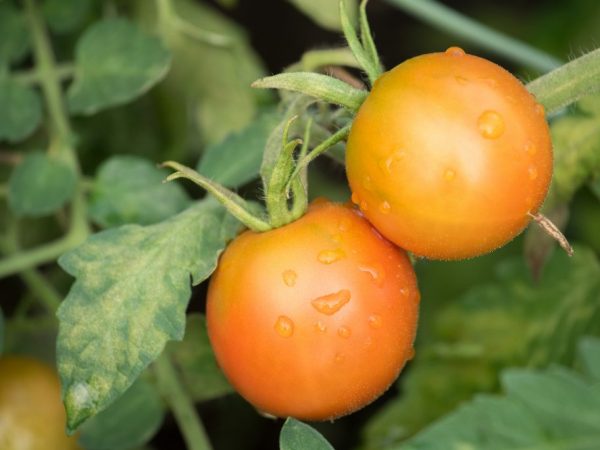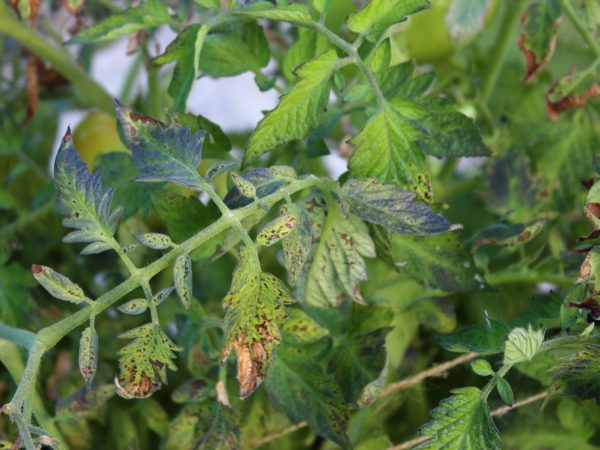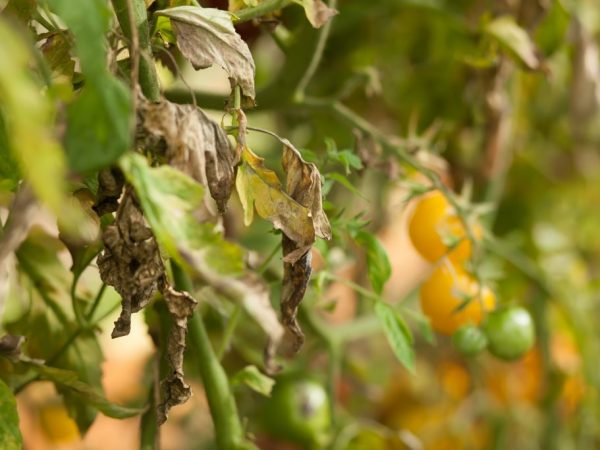Treatment of tomato seedlings from diseases
When growing tomatoes, gardeners often face diseases of the vegetable crop, which, already at the initial stage of development, lead to the loss of plantings. Timely treatment of tomato seedlings helps to save seedlings and the future harvest of vegetables.

Treatment of tomato seedlings from diseases
Fungal diseases
Fungal infections require immediate treatment. A fungus capable of quickly spreading to different parts of the plant infects the entire tomato bush, parasitizing both inside and outside - without taking appropriate measures, it is unlikely that it will be possible to save the vegetable crop.
Blackleg
The black leg affects the vegetable crop already at the stage of the first seedlings, develops along the stem near the surface of the soil, gradually thinning it, which destroys young seedlings. This is one of the most dangerous fungal diseases of seedlings.
Prophylaxis
In order to prevent blacklegs on tomatoes, before planting seeds, the soil is disinfected, for this it is steamed in an oven, and then watered with a weakly concentrated solution of potassium permanganate.
Septoria
Another fungal disease, septoria, or white spot of tomato foliage, is easily recognizable by its description: on the lower tier of tomato greens, spots of off-white or brown color appear, covered with small dots - fungi.
Prophylaxis
To prevent contamination of the soil, prophylaxis is carried out before planting seedlings.
For the treatment of septoria disease of tomato seedlings, fungicides, Ridomil, Bordeaux liquid or Alpha-copper are used.
Fusarium wilting
When tomato plantings are affected by soil fungus, the plants lose their elasticity, the tops of the shoots wither, the foliage twists, as a result the seedlings die.
Treatment
For the treatment of this fungal disease at home, they use the drugs Fitosporin, Trichodermin and Phytocide.
Late blight
The defeat of late blight causes a disease of the aerial part of the tomato bush, which leads to necrosis and subsequent decay of vegetables.
Treatment
At the stage of growing seedlings at home, spraying with potassium permanganate is carried out (1 teaspoon of powder per 10 liters of water). The consumption rate of the working fluid is about 5 cups for 2 tomato seedlings. Before transplanting tomato seedlings into the greenhouse, the dose for treatment and prevention is increased to 1 glass of working fluid per 1 tomato seedling.
Viral diseases

The plant can be infected from sick insects
At the initial stages, viral infections do not manifest themselves in any way. Their sources are:
- contaminated soil,
- insects in the greenhouse,
- poor quality seed material.
Tomato mosaic
Tomato mosaic is a common viral disease that is dangerous for young seedlings. It manifests itself in the form of an unusual pattern on leaf blades of light or dark green color.With the active spread of the mosaic, the leaves are deformed.
Treatment
Treatment of growing tomato seedlings is carried out with boric acid, a solution of potassium permanganate and serum with urea. Watering frequency - 3 times a day.
Streak
Roughness, or streak, is recognized by the dead tissue strips on the stems and foliage of tomato seedlings. With the development of the defeat of the vegetable culture, these strips increase in size, blur, merge into a single spot. As a result, the foliage of the seedlings dies off and the seedlings die.
Treatment
Treatment of tomato seedlings against Strick is impossible - all affected seedlings are removed. Healthy sprouts are sprayed with a highly concentrated solution of potassium permanganate.
Seedlessness
With aspermia, seedlings have a thin, flimsy stem, bushiness, and underdevelopment of individual parts. Inflorescences grow together, shrink and change color. Disease carriers are insects and infected sprouts.
Prophylaxis
To prevent the spread of the virus during the picking of the cultivated vegetable crop and during its transplantation into the soil, it is treated with magnesium permanganate.
Bacterial infections
Bacteria harmful to tomato seedlings remain active in seeds and soil. There are no drugs for the treatment of such diseases of tomato seedlings, the only measure is to prevent and increase the resistance of plants to bacteria.
Black spot

Excessive moisture damages plants
Bacterial black spot appears due to excessive humidity at high temperatures. In the process of the disease, black dots and stripes on the stems appear on the seedlings, as well as black spots on the leaf blades.
Prophylaxis
For the purpose of prevention, tomato planting is treated with Bordeaux liquid and manganese solution.
Brown spot
Brown spots on foliage on the upper surface and with a green bloom on the lower part appear with the same increases in humidity.
Prophylaxis
To prevent this disease, tomato seedlings are sprayed with fungicides, which include copper: copper sulfate or cuprosil.
Non-communicable diseases
Tomato sprouts also get sick due to a lack of mineral nutrition or improper agricultural practices.
Agrotechnics
Compliance with basic agrotechnical rules when transplanting sprouts into open ground or in a greenhouse helps prevent the occurrence of diseases. In order to keep seedlings healthy:
- adhere to the rules of crop rotation,
- before planting seeds, the soil is disinfected and cleaned of old plant residues,
- use the seeds of disease-resistant tomato varieties.
Good nutrition
When the appearance of tomato seedlings changes, the reason should be sought in an excess or lack of mineral nutrition:
- Nitrogen. With its lack, the leaves become pale, with a slight yellow tinge, the stem is fragile. With an overabundance, seedlings begin to "fatten" and build up green mass, delaying flowering and fruiting.
- Phosphorus. Its deficiency leads to darkening of the leaves, the appearance of a blue tint, growth is delayed. An excess of phosphorus leads to inadequate absorption of zinc and iron by the sprouts.
- Potassium. Tomato foliage, with its lack, turns yellow, then becomes brown, curls and wrinkles. An excess of potassium inhibits the development of seedlings.
- Magnesium and iron. With their lack, the leaves turn yellow, turn pale, sometimes a reddish tint is observed, yellowness appears between the veins.
- Calcium. With its lack, the foliage dries at the tips, the leaves curl up and then die off.
- Boron and sulfur. When these elements are lacking, the leaves become brittle, their upper layer twists, the stem becomes thinner.
- Copper. When this component is lacking, the leaves shrink and wither, curling into a tube and whitening at the ends, they can turn blue-green.
- Manganese.Lack of manganese causes underdevelopment of foliage, it turns yellow at the base, spots similar to mosaics are formed on it.
Prevention and treatment
To avoid problems with insufficiently nutritious soil, acquiring land for growing tomato seedlings in a specialized store helps.
If the nitrogen component is insufficient, tomato seedlings are watered with urea (25-30 g per 10 l of water). Potassium is replenished with potassium nitrate (1 tablespoon per bucket of water), the consumption rate is 0.5 liters for one bush. The lack of zinc and magnesium is eliminated by foliar dressing and spraying with zinc sulfate (1 tsp per 10 l of water) and magnesium nitrate (5 g per 10 l).
If the seedlings of tomatoes lack boron, its deficiency is eliminated by spraying with boric acid (0.5 tsp per 5 liters of water).

